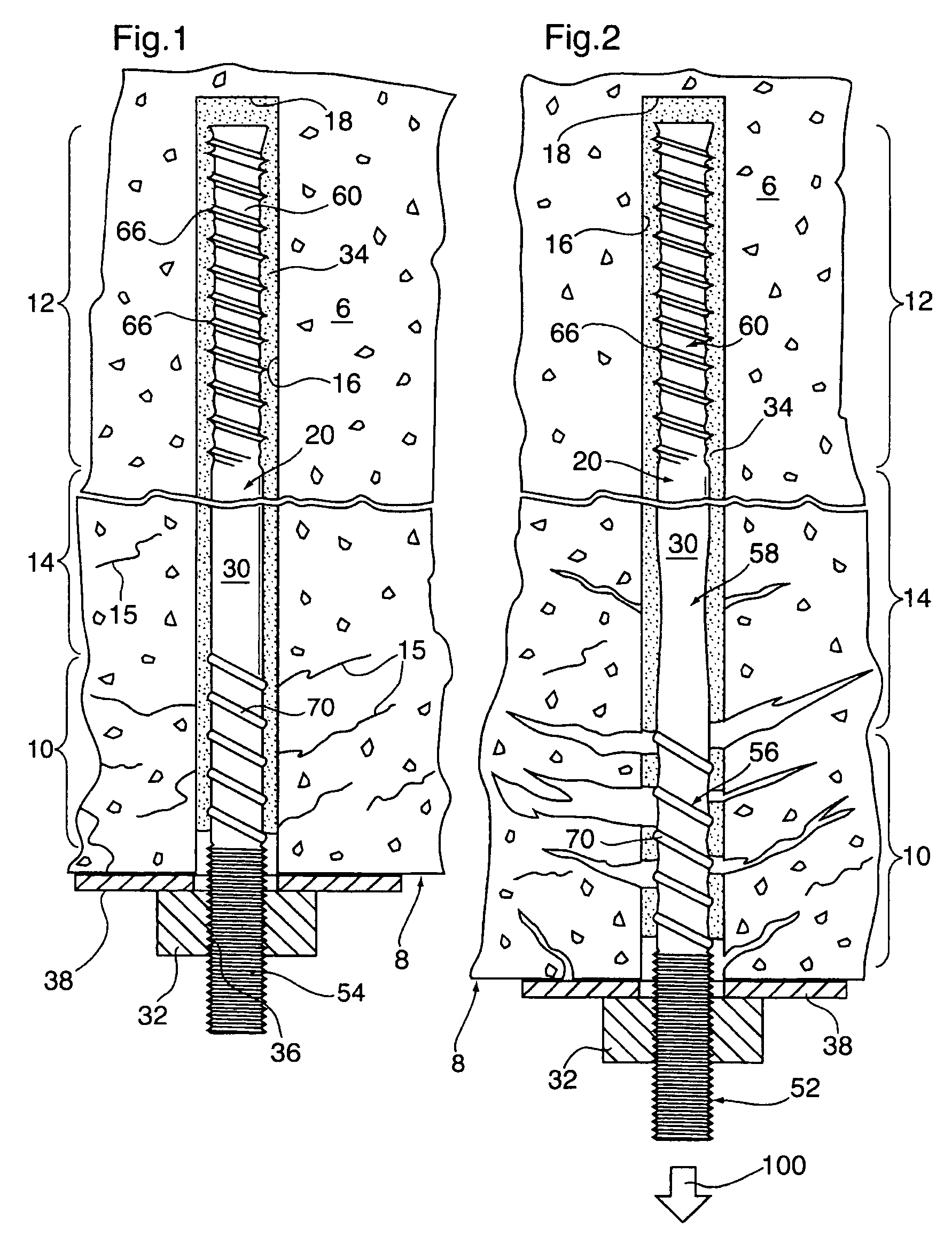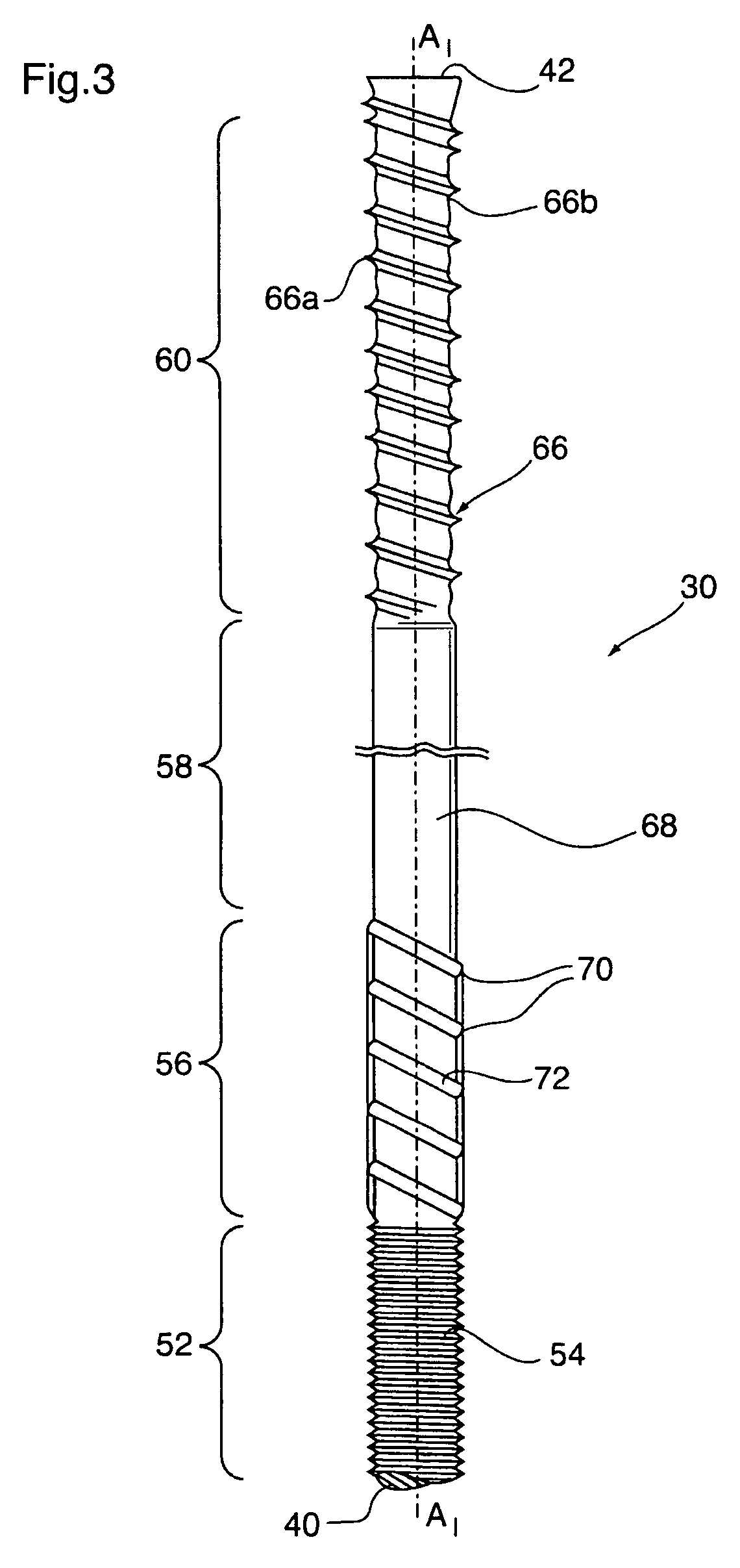Anchor tendon with selectively deformable portions
a technology of anchor tendon and selective deformation, which is applied in the direction of screws, load-modifying fasteners, dowels, etc., can solve the problems of tendon deformation, increased risk of premature failure, and rupture and resin mixing, so as to increase the height and/or depth of the bar deformation, increase the bar stiffness and rigidity, and reduce the deformation range
- Summary
- Abstract
- Description
- Claims
- Application Information
AI Technical Summary
Benefits of technology
Problems solved by technology
Method used
Image
Examples
Embodiment Construction
[0031]FIGS. 1 and 2 illustrate a typical rock complex 6 where a rock face 8 is exposed by blasting. As a result of blasting forces, the rock complex 6 most typically includes a fractured rock zone 10 which is immediately adjacent to the rock face 8, a cohesive rock zone 12, and a transition rock zone 14 intermediate the fractured zone 10 and the cohesive zone 12. The fractured rock zone 10 extends inwardly a distance of approximately between about 0.25 and 0.75 meters from the rock face 8. The fractured zone 10 is most typically characterized by a series of micro-fractures 15 which are produced by the blasting forces. In hard rock applications, the cohesive zone 12 most often consists of unfractured rock strata, with the transition zone 14 consisting substantially of unfractured rock with a few micro-fracture 15.
[0032]The present invention relates to a mine roof support system 20 which, as shown best in FIGS. 1 and 2, is adapted not only for the static reinforcement and consolidatio...
PUM
 Login to View More
Login to View More Abstract
Description
Claims
Application Information
 Login to View More
Login to View More - R&D
- Intellectual Property
- Life Sciences
- Materials
- Tech Scout
- Unparalleled Data Quality
- Higher Quality Content
- 60% Fewer Hallucinations
Browse by: Latest US Patents, China's latest patents, Technical Efficacy Thesaurus, Application Domain, Technology Topic, Popular Technical Reports.
© 2025 PatSnap. All rights reserved.Legal|Privacy policy|Modern Slavery Act Transparency Statement|Sitemap|About US| Contact US: help@patsnap.com



